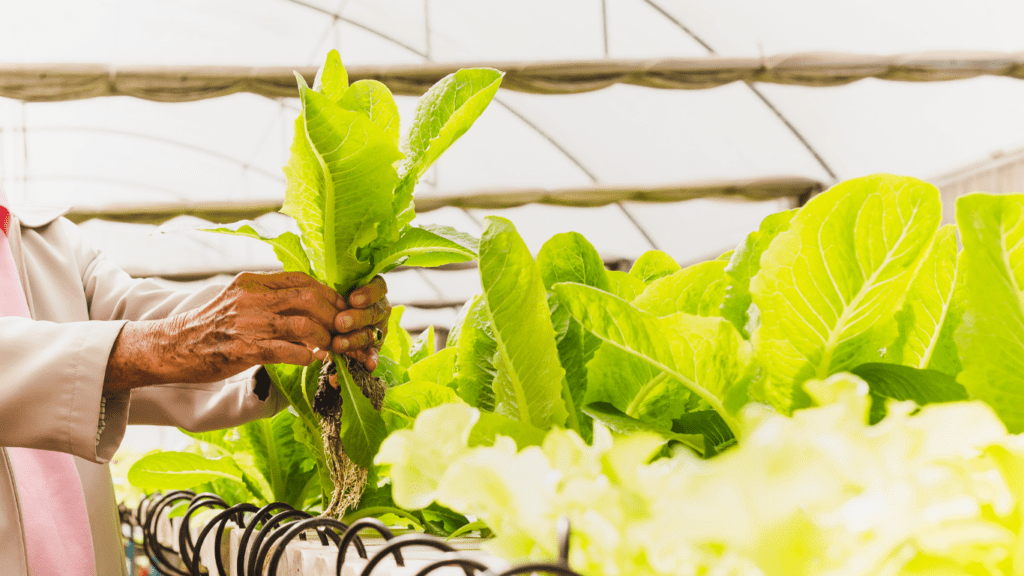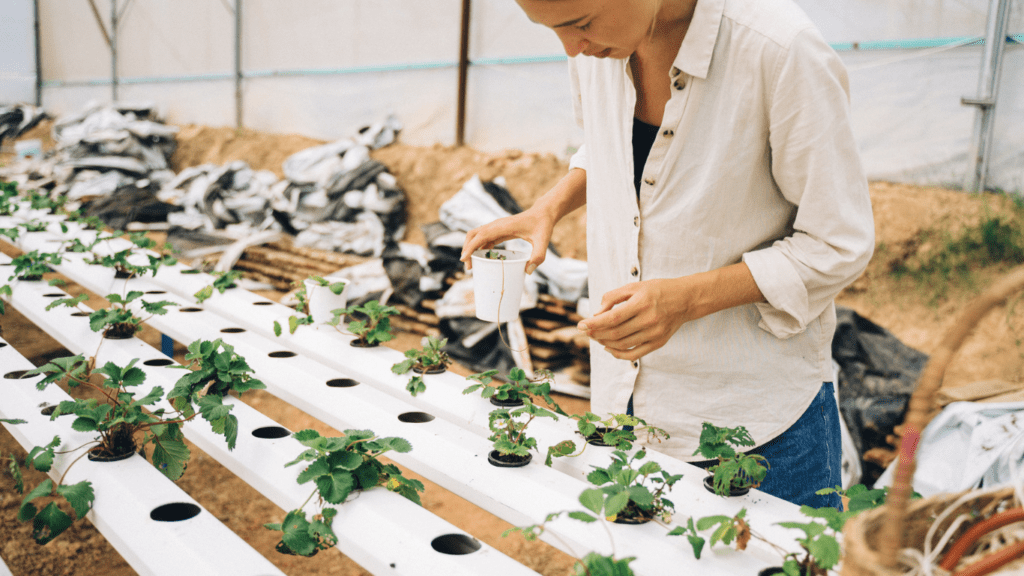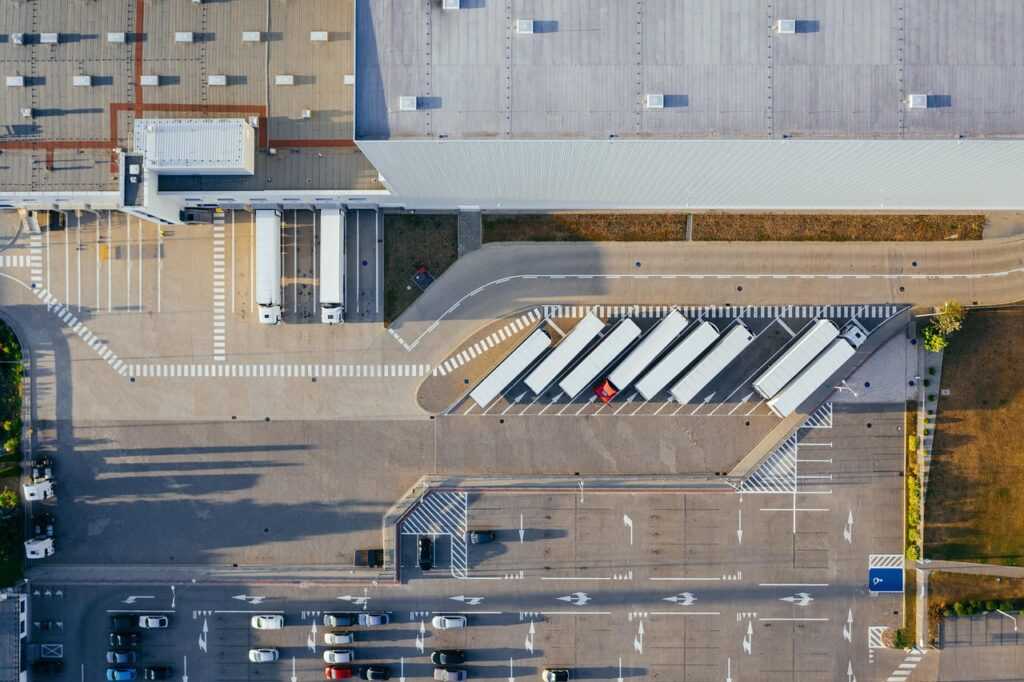What Is Vertical Farming?
Vertical farming involves cultivating crops in stacked layers, often integrated into buildings like skyscrapers or repurposed warehouses. This method maximizes space usage, using less land compared to traditional farming.
Key Features of Vertical Farming:
- Controlled Environment Agriculture (CEA): By using CEA, vertical farms maintain optimal growing conditions such as temperature, light, and humidity, reducing dependency on seasonal weather.
- Hydroponics, Aeroponics, and Aquaponics: These soilless farming techniques enhance efficiency and productivity. Hydroponics grows plants in nutrient-rich water. Aeroponics suspends plants in the air, using mist. Aquaponics combines fish farming with hydroponics, creating a symbiotic environment.
- LED Lighting: LED lights simulate sunlight, enabling photosynthesis even indoors. They are energy-efficient and customizable to specific wavelengths, enhancing plant growth.
Benefits of Vertical Farming:
- Space Efficiency: By growing upward, vertical farming maximizes limited urban space, making it viable in densely populated cities.
- Reduced Water Usage: Vertical farms use up to 95% less water than traditional farms. Recirculating systems minimize waste.
- Year-Round Production: Controlled environments enable continuous crop production, unaffected by seasonal changes or weather conditions.
- Proximity to Consumers: Urban locations reduce transportation costs and emissions, providing fresher produce to consumers.
Challenges of Vertical Farming:
- High Initial Costs: Establishing vertical farms requires significant investment in technology and infrastructure.
- Energy Consumption: Constant lighting and climate control systems demand substantial energy, contributing to operational costs.
- Technical Knowledge: Managing a vertical farm requires expertise in agricultural science, technology, and engineering, creating a barrier to entry for many potential farmers.
Vertical farming redefines traditional agriculture, offering a sustainable solution to urban food production challenges.
Historical Context of Vertical Farming
Vertical farming has evolved significantly from its conceptual roots to its present state as a viable agricultural method within urban settings.
Early Beginnings
Vertical farming traces its origins back to ancient civilizations. The Hanging Gardens of Babylon, constructed around 600 BCE, represent an early example of vertically arranged gardens.
Another notable instance is the floating gardens of Aztec civilization, known as chinampas. Though not vertical, they maximized space in a manner inspiring future concepts.
Modern Developments
Dickson Despommier, a Columbia University professor, rejuvenated interest in vertical farming in 1999. His book The Vertical Farm: Feeding the World in the 21st Century emphasized the potential of skyscraper farms. In 2012, the first commercial vertical farm, FarmedHere, launched in Chicago, using advanced hydroponic systems.
Since then, vertical farming has proliferated globally. Companies like AeroFarms and Plenty, with roots firmly planted in technological innovation, continue to advance the industry by increasing efficiency and crop yield while minimizing environmental impact.
Benefits of Vertical Farming

Vertical farming offers numerous advantages that address modern agricultural challenges while enhancing efficiency and sustainability.
Environmental Impact
Vertical farming significantly reduces the environmental footprint compared to traditional farming. By growing crops indoors, it cuts the need for pesticides, conserving natural habitats.
The closed-loop systems like hydroponics and aeroponics reduce water usage by up to 90%, vital in water-scarce regions. For instance, AeroFarms claims to use 95% less water than field farming. Controlled environments also minimize greenhouse gas emissions since crops grow year-round without long transport distances.
Efficiency and Yield
Vertical farms maximize space, yielding higher crop output per square foot than traditional farms. For example, a single acre of vertical farming can equal up to 10-20 soil-based acres.
These farms can achieve multiple harvests annually due to their controlled environment. LED lighting and climate control provide optimal growth conditions, boosting productivity. In 2020, Plenty reported a yield of 400 times more produce per acre than conventional farming, demonstrating this efficiency.
Urban Integration
Vertical farming integrates seamlessly into urban settings, turning unused buildings into productive spaces. This urban farming reduces food miles, leading to fresher produce for city dwellers.
Sky Greens in Singapore is a prime example, transforming urban landscapes into green spaces. Rooftop gardens and repurposed warehouses create local food sources, promoting food security. Urban vertical farms also create job opportunities within cities, enhancing community resilience and sustainability.
Challenges and Criticisms
While vertical farming offers numerous benefits, it also faces several challenges and criticisms that must be addressed for its widespread adoption.
Economic Considerations
Vertical farming demands significant capital investment. High costs stem from the necessary infrastructure, advanced technology, and regular maintenance.
For example, setting up controlled environments and installing systems like hydroponics or aeroponics requires substantial financial resources. Profitability remains uncertain, especially for smaller farms competing with traditional agriculture. Operating costs, including electricity for LED lighting and climate control, contribute to financial strain.
Technological Barriers
Advanced technology is essential for vertical farming success, yet it’s also a significant barrier. Systems like automated nutrient delivery, climate control, and precision agriculture technologies require skilled operators.
Dependence on cutting-edge technology can lead to failures or disruptions if systems malfunction. For instance, a power outage could jeopardize entire crop cycles. Ongoing research and development efforts aim to enhance reliability and reduce costs, but technological complexity remains a hurdle.
Sustainability Concerns
Critics question the sustainability of vertical farming due to its energy consumption. Though these farms often reduce water usage compared to traditional methods, their reliance on artificial lighting and climate control can be energy-intensive. In regions relying on non-renewable energy sources, this could negate environmental benefits.
Ensuring sustainability involves integrating renewable energy sources like solar or wind power and improving energy efficiency. Additionally, the focus on high-value crops might limit biodiversity, raising concerns about the ecological impact of large-scale vertical farming operations.
Future Prospects
Vertical farming’s future looks promising as technological advancements and societal needs drive development.
Innovations and Research
Ongoing research aims to enhance vertical farming’s efficiency and sustainability. Scientists are exploring advancements in LED lighting, AI-driven systems, and robotics to optimize plant growth, reduce energy costs, and automate farming tasks.
For instance, researchers at MIT are developing AI systems that use machine learning to manage plant health and resource distribution. Innovations like these could significantly reduce operational costs and improve yield consistency in vertical farms.
Policy and Regulation
Government policies and regulations play a pivotal role in shaping the future of vertical farming. Many countries are starting to recognize the potential benefits of vertical farming for food security and urban development. In Singapore, the government offers grants and incentives to promote urban farming and reduce dependence on food imports.
The USDA in the United States is also exploring vertical farming as a potential solution to agricultural challenges, providing funding for research and development. Clear policies and support from governments can drive the adoption and success of vertical farming globally.



